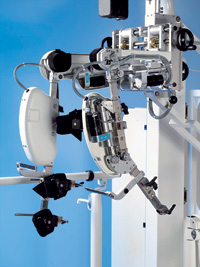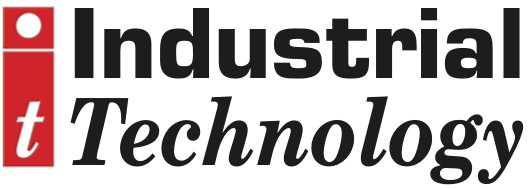
Posted to News on 28th Jul 2011, 00:00
A step forward in motor function
Lokomat therapy is a major step forward locomotion therapy for neuromuscular diseases, with motors from Maxon playing a key role.

People suffering from paraplegia - the partial or full paralysis of the legs - could soon find their prospects of walking radically improved thanks to a new technological therapy, called Lokomat. A greater understanding of motor learning in neurologically-impaired patients has helped inform this new rehabilitation technique. In order to learn a new movement, the body has to be trained, through a very high number of repetitions that imitate the movement exactly.
Locomotion therapy for neuromuscular diseases is not new, but the technology involved in Lokomat brings it into a field of its own. Since the legs are unable to fully move or carry a person's body alone, the patient is supported by a harness and then guided by a pair of robotic legs, which walk at a steady pace on a treadmill. Although the machine is taking most of the weight of the patient, the walking nevertheless feels extremely natural.
The crucial developments are housed in the motorised leg orthoses. Each contains a Maxon drive comprising an RE 40 motor, a gearhead and a brake - all perfectly synchronised with the speed of the treadmill underneath the Lokomat. Software controls the hip and knee joints in real time with physiological response curves, and each of the four axes is carefully monitored to ensure that the walking pattern is followed exactly.
The Lokomat allows the load applied by the patient to be gradually increased as the therapy progresses and supports a flowing and more natural gait. Patients may also change from automated to manual therapy using a couple of small hand grips. The result is a machine that can tirelessly help patients train their bodies to replicate the precise movements that most of us take for granted.
Patients can start to see positive changes after just a few training sessions with Lokomat, with improved step length, frequency and symmetry. But patients aren't the only ones to benefit from this innovation. Previously, the only way to administer locomotion therapy was to have two therapists working with a patient, supporting them on each side. This put a great deal of physical strain on therapists, who might need to help several patients a day. Now the Lokomat bears the weight of the patient, so a single therapist is able to help prepare and watch each patient, without incurring undue strain themselves. What's more, with only one therapist required at once, the Lokomat enables clinics to dedicate twice as much therapy time to each individual. The electronic control panel allows therapists to plot patient's progress more exactly, and plan future work based on detailed feedback.
It's not a panacea, but it represents a potentially life-altering step forward in treatment. Around 25% of paraplegic patients can expect to benefit from this technology and the improvement rate doubles in cases of hemiplegia; conditions where one whole side of a patient's body is paralysed. Importantly, the Lokomat isn't just designed for adults. A great deal of time and thought has gone into creating a version that works for children suffering from similar conditions - helping to revolutionise paediatric departments for children suffering from cerebral palsy and other neurological movement disorders.
Lokomat's development
Lokomat's development was a combined effort from Hocoma AG and Balgrist University Hospital - it's an example of the great results that a close collaboration between medical teams and product engineers can bring. Professor Dietz, chief physician and director of the Balgrist University Hospital's Paraplegic Center, explains: "The great advantage for us was the close exchange of ideas between all those involved; without it, we would not have been successful."
This close working relationship was supported in turn by the unusually hands-on role that Maxon Motor played in specifying the components that bring the artificial legs to life. With Maxon working hand-in-hand over a long period with the Lokomat design engineers, the exacting specifications were met, and exceeded. Without the ability to work on a one-to-one basis, the design would have been impossible - due to the incredibly high level of precision required to challenge, but not damage, patients' legs.
The engineers have cited the exceptional dynamics, high power density (the ratio of volume to performance), high reliability, and long service life of maxon components as key points in choosing to work with the company. Senior sales engineer Ian Bell says: "The Lokomat is a stunning piece of engineering, negotiating that difficult line between being too challenging, and not being challenging enough, with apparent ease. The fact that Maxon motors, because of their reliability and sheer precision, now form an integral part of helping to rehabilitate so many disabled people is something that makes us all tremendously proud."
While Lokomat has been developed in Switzerland, it is now being introduced to the global market, so you may even see them appearing in your local hospital soon - the latest step in pushing forward the boundaries of medical technology.






